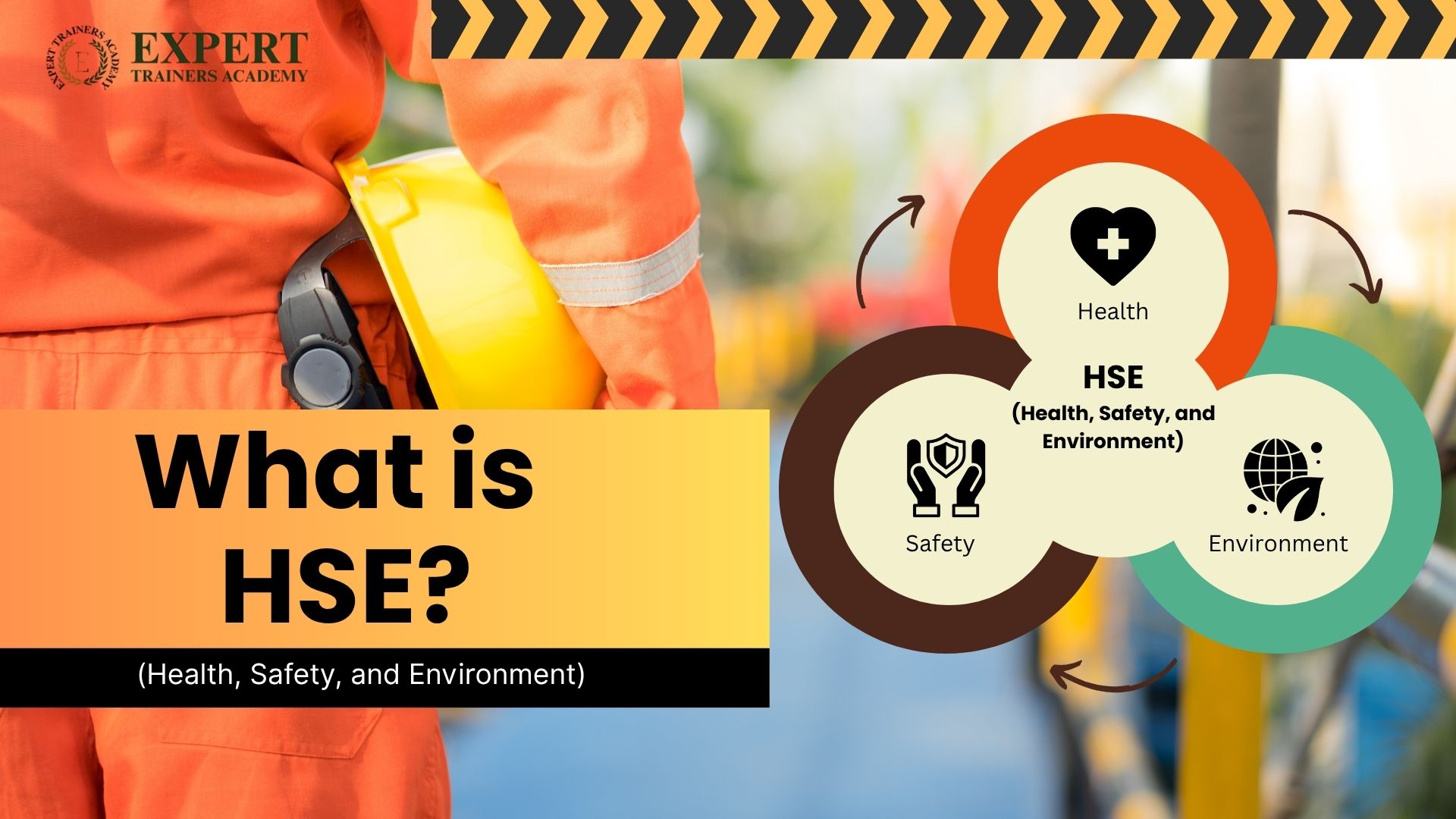
- Admin
- No Comments
- October 13, 2025
Every workplace, whether it’s a bustling construction site, a busy factory, or a corporate office, comes with its own set of risks. From minor injuries to major accidents, health hazards, and even environmental impacts, these challenges can affect employees and the business as a whole. That’s where HSE comes into play.
HSE stands for Health, Safety, and Environment. It’s a framework that ensures workplaces are safe for employees, compliant with laws, and environmentally responsible. Companies that prioritize HSE don’t just prevent accidents—they create a culture of care, responsibility, and sustainability.
In this blog, we’ll break down what HSE really is, why it’s necessary, the benefits it brings, best practices, and its importance across industries.
What is HSE?
HSE full form is Health, Safety, and Environment. It is a framework that helps organizations protect employee health, prevent workplace accidents, and minimize environmental impact.
- Health: Ensuring employees are not exposed to harmful conditions or substances that could affect their physical or mental well-being.
- Safety: Protecting employees from workplace accidents, injuries, and hazards.
- Environment: Minimizing the negative impact of business operations on the environment, including waste management, pollution control, and sustainable resource use.
In simple terms, HSE is about making sure people and the planet stay safe while work gets done efficiently.
Why is HSE Needed?
Every workplace has risks. From slippery floors and heavy machinery to chemical exposure and noise pollution, dangers are everywhere. Without proper HSE measures, companies may face:
Accidents and Injuries – Minor injuries can slow work, while major accidents can cause long-term harm or even fatalities.
Legal Penalties – Governments enforce strict safety and environmental laws. Non-compliance can result in fines, lawsuits, or shutdowns.
Reduced Productivity – Unsafe workplaces lead to absenteeism, low morale, and high staff turnover.
Reputation Damage – News of workplace accidents or environmental negligence can hurt a company’s brand.
Implementing HSE measures ensures these risks are minimized. It’s not just about compliance; it’s about creating a workplace where employees feel safe, valued, and motivated.
Benefits of HSE
Proper HSE management brings a wide range of benefits to both employees and organizations:
Reduced Workplace Accidents – Following HSE guidelines prevents injuries and fatalities. Safety protocols, risk assessments, and proper training all contribute to a safer environment.
Better Employee Health – Health initiatives, proper ergonomics, and regular health checks reduce work-related illnesses. Employees stay fit, productive, and engaged.
Cost Savings – Preventing accidents and environmental damage reduces costs related to medical expenses, legal fees, and equipment repair.
Regulatory Compliance – HSE compliance ensures companies meet local and international laws, avoiding fines or legal issues.
Environmental Protection – Proper waste management, pollution control, and sustainable practices reduce negative environmental impact.
Improved Reputation – Companies known for strong HSE practices attract better talent, loyal clients, and positive public perception.
You Can Also Read: Roles and Responsibilities of a Safety Officer
Which are the Best Practices for HSE?
Implementing HSE effectively requires a combination of policies, training, and culture. Some best practices include:
Risk Assessment – Identify potential hazards, assess their impact, and take preventive measures before accidents occur.
Employee Training – Regular training sessions on safety procedures, equipment handling, and emergency response help employees stay prepared.
Emergency Preparedness – Conduct drills and have emergency protocols in place for fires, chemical spills, or natural disasters.
Use of Personal Protective Equipment (PPE) – Ensure employees use helmets, gloves, goggles, masks, and other protective gear when needed.
Health Programs – Promote physical and mental health initiatives, including ergonomic setups, health check-ups, and stress management workshops.
Environmental Measures – Reduce waste, recycle materials, control emissions, and use sustainable resources.
Continuous Monitoring and Reporting – Keep track of incidents, near-misses, and compliance to improve practices over time.
These practices, when consistently applied, create a culture of safety and responsibility that benefits everyone in the organization.
Importance of HSE in Industries
HSE is not limited to one type of workplace—it’s essential across all industries:
- Construction: Workers face heavy machinery, heights, and hazardous materials. HSE ensures proper safety gear, risk management, and accident prevention.
- Manufacturing: Factories deal with chemicals, machinery, and repetitive tasks. HSE practices prevent injuries and ensure machinery is used safely.
- Oil & Gas: High-risk operations require strict safety protocols, emergency preparedness, and environmental protection measures.
- Healthcare: Protecting healthcare workers from infections, chemical exposure, and ergonomic strain is crucial.
- Corporate Offices: Even offices need HSE measures, like fire safety, ergonomic workstations, and mental health initiatives.
Every industry, big or small, benefits from implementing HSE principles. It’s about protecting people, ensuring compliance, and maintaining operational efficiency.
Key Components of HSE Implementation
Successful HSE implementation involves several key components:
Policy Development – Clear HSE policies that define responsibilities, standards, and procedures.
Risk Management – Identifying hazards, assessing risks, and implementing control measures.
Training & Education – Equipping employees with knowledge and skills to work safely.
Monitoring & Auditing – Regular inspections and audits to ensure compliance and continuous improvement.
Emergency Preparedness – Plans for responding to accidents, health emergencies, or environmental incidents.
Employee Engagement – Encouraging employees to report hazards, suggest improvements, and follow safety protocols.
Continuous Improvement – Learning from incidents and audits to refine safety and environmental practices.
You Can Also Read: Top Benefits of Enrolling in ISO 45001 Training Courses
Conclusion
HSE, or Health, Safety, and Environment, is more than just a set of rules—it’s a mindset that protects people, the planet, and the business. From reducing accidents and illnesses to ensuring legal compliance and sustainability, HSE practices are crucial for every workplace.
By understanding what HSE is, implementing best practices, and engaging employees at all levels, organizations can create safer, healthier, and more environmentally responsible workplaces. Investing in HSE is not just good practice—it’s essential for long-term success and growth.





